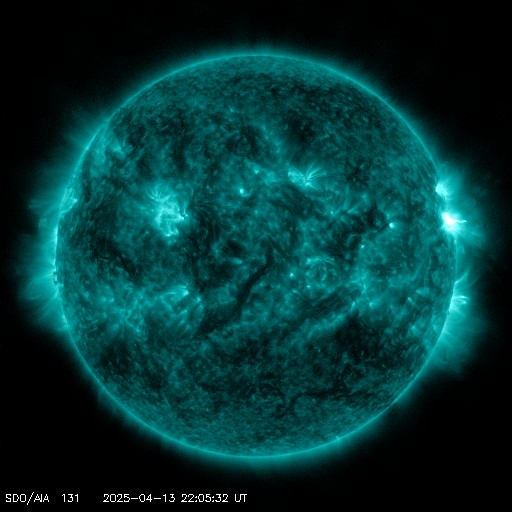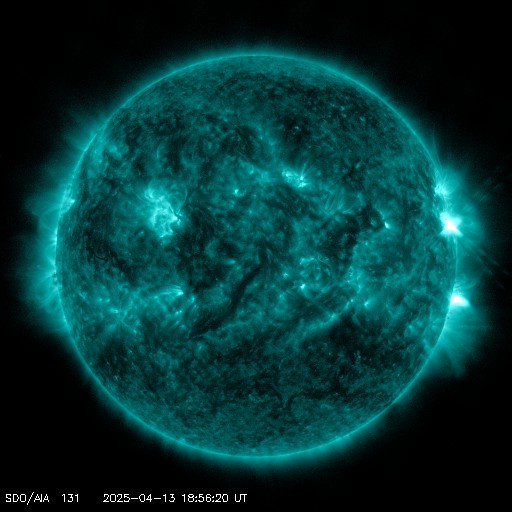Viewing archive of Thursday, 6 July 2023
Daily bulletin on solar and geomagnetic activity from the SIDC
Issued: 2023 Jul 06 1232 UTC
SIDC Forecast
Solar flares
C-class flares expected, (probability >=50%)
Geomagnetism
Minor storm expected (A>=30 or K=5)
Solar protons
Quiet
| 10cm flux | Ap | |
|---|---|---|
| 06 Jul 2023 | 154 | 012 |
| 07 Jul 2023 | 152 | 026 |
| 08 Jul 2023 | 150 | 020 |
Solar Active Regions and flaring
The solar flaring activity was at moderate levels, with two M-class flare and several C-class flares being detected in the last 24 hours. The largests flares of the period were an M1.0 flare, peaking at 18:58 UTC on July 05 and an M1.1 flare, peaking at 10:49 on July 06, associated with NOAA AR 3354. This region has now almost rotated off the solar disk. NOAA AR 3359 (beta-gamma class), which is the largest and most complex active region on the disk, continued to produce several C-class flares. Isolated C-class flaring was also produced by NOAA AR 3360 (beta class) and by NOAA AR 3361 (beta-gamma class). Other regions on the disc have simple configuration of their photospheric magnetic field (alpha and beta) and did not show any significant flaring activity. The solar flaring activity is expected to be at low levels over the next 24 hours with C-class flares likely and M-class flares possible.
Coronal mass ejections
No Earth-directed Coronal Mass Ejections (CME) were observed in the last 24 hours.
Coronal holes
A positive polarity coronal hole in the northern hemisphere transited the central meridian today. An associated high speed stream in in-situ solar wind measurements is expected for July 07 – July 08.
Solar wind
Over the past 24 hours, the solar wind conditions became slightly disturbed with the total interplanetary magnetic field reaching values up to 13 nT. The Bz component ranged between -10 nT and 8 nT. The solar wind velocity followed an increasing trend, rising from 350 km/s to 445 km/s. The solar wind speed is expected to continue to be elevated in the next days, with a further enhancement likely from late on July 06 – early on July 07 due to a possible arrival of the CME from July 04, and on July 07 – 08 due to the high speed stream arrival associated with the positive polarity coronal hole in the northern hemisphere.
Geomagnetism
Geomagnetic conditions were quiet to unsettled (NOAA Kp: 1 to 3 and K-BEL: 1 to 3). Geomagnetic conditions are expected to be at quiet to unsettled levels, with a chance of increasing to active conditions and isolated minor or moderate storm periods from late on July 06 - early on July 07, due to a possible arrival of the CME from July 04 and expected high speed stream arrival.
Proton flux levels
The greater than 10 MeV proton was at the nominal levels in the past 24 hours. The proton flux is expected to remain below 10 pfu threshold over the next day, with a small chance that a particle event occurs in association with an X-class flare or a coronal mass ejection.
Electron fluxes at geostationary orbit
The greater than 2 MeV electron flux was above the 1000 pfu threshold for a short period. It is expected to remain close to the threshold for the next 24 hours. The 24-hour electron fluence was at moderate levels and it is expected to remain at normal to moderate levels over the next 24 hours.
Today's estimated international sunspot number (ISN): 142, based on 20 stations.Solar indices for 05 Jul 2023
| Wolf number Catania | 154 |
| 10cm solar flux | 154 |
| AK Chambon La Forêt | 013 |
| AK Wingst | 009 |
| Estimated Ap | 008 |
| Estimated international sunspot number | 136 - Based on 25 stations |
Noticeable events summary
| Day | Begin | Max | End | Loc | Strength | OP | 10cm | Catania/NOAA | Radio burst types |
|---|---|---|---|---|---|---|---|---|---|
| 05 | 1836 | 1858 | 1921 | N24E35 | M1.0 | SF | 63/3361 |
Provided by the Solar Influences Data analysis Center© - SIDC - Processed by SpaceWeatherLive
All times in UTC
Current data suggests there is a slight possibility for aurora to appear at the following high latitude regions in the near future
Gillam, MB, Yellowknife, NTLatest news
Latest forum messages
Support SpaceWeatherLive.com!
A lot of people come to SpaceWeatherLive to follow the Sun's activity or if there is aurora to be seen, but with more traffic comes higher server costs. Consider a donation if you enjoy SpaceWeatherLive so we can keep the website online!

Latest alerts
04:45 UTC - Geomagnetic activity
Active geomagnetic conditions (Kp4) Threshold Reached: 04:29 UTC
Sunday, 13 April 2025
22:21 UTC - Solar flare
Moderate M1.66 flare from sunspot region 4055
22:03 UTC - Radio Blackout
Minor R1 radio blackout in progress (≥M1 - current: M1.01)
20:48 UTC - Hemispheric Power Index
The OVATION model predicts the Hemispheric Power Index to reach 50GW at 21:39 UTC
19:09 UTC - Solar flare
Moderate M3.24 flare from sunspot region 4055
Space weather facts
| Last X-flare | 2025/03/28 | X1.1 |
| Last M-flare | 2025/04/13 | M1.6 |
| Last geomagnetic storm | 2025/04/06 | Kp5 (G1) |
| Spotless days | |
|---|---|
| Last spotless day | 2022/06/08 |
| Monthly mean Sunspot Number | |
|---|---|
| March 2025 | 134.2 -20.4 |
| April 2025 | 132.1 -2.1 |
| Last 30 days | 132.4 -10.7 |





